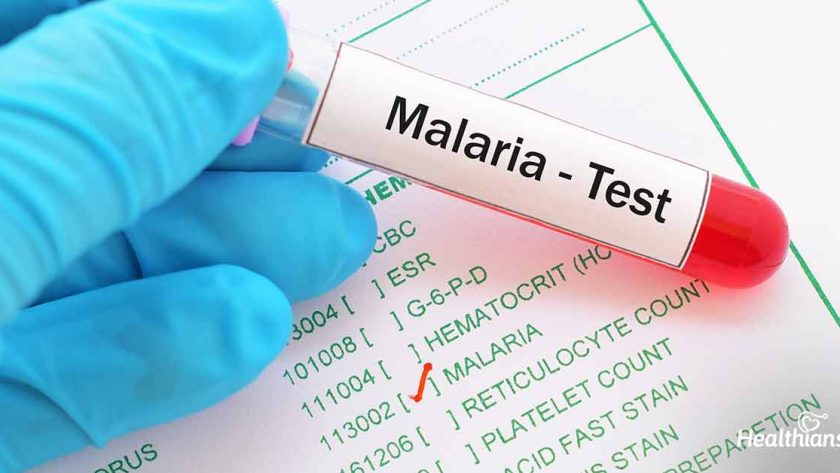[ad_1]
Contributed by: Rachana Arya
Introduction
With incessant rains during the much-awaited monsoon season, comes the risk of a mosquito-borne disease – Malaria. Malaria is caused by a parasite called plasmodium and is transmitted by the female Anopheles mosquito. After the infection has become active, it replicates in the bloodstream and reaches the liver, later invading the red blood cells or RBCs. Tell-tale symptoms of malaria-like fever, chills, body aches, and headaches can develop as quickly as seven days after you are bitten by an infected mosquito.
There are several myths that are circulated over the internet and social media. Here, we put some common myths and misconceptions about malaria into the dustbin.
Myth 1: Once you get malaria, you become immune to it
Fact:
Not entirely true. It is not safe to assume that you do not need protection just because you have been infected once. If you’ve been bitten before, you are still not completely immune to the disease. You will still have to take precautions like wearing full-sleeve clothes and using mosquito repellent to avoid the risk.
Myth #2: You’re safe from malaria, indoors
Fact:
Many people believe that staying indoors reduces the danger of being bitten by a mosquito, and hence of contracting malaria. There is no doubt that spending time indoors, with doors and windows shut, may substantially reduce your risk of being bitten by a mosquito at night. However, some insects, such as the Aedes aegypti mosquito that transmits Zika and dengue fever, can nest in nooks and corners in houses and yards, such as under potted-plant containers. That is why, in high-risk areas, specialists advise sleeping under mosquito nets even when air-conditioning is switched on to safeguard yourself against malaria.
Myth #3: Malaria isn’t really fatal
Fact:
Although not every case is fatal, but malaria deserves immediate, quality medical attention. It begins as a flu-like illness, but can gradually become severe. Early case detection and prompt treatment (EDPT) is the main strategy of malaria control. You must watch out for typical manifestations of symptoms of malaria that include:
- High temperature
- Chills
- Vomiting
- Shivering
- Severe headache
- Pain in joints
- Fatigue
It is important to get an accurate evaluation of your symptoms without dismissing the symptoms.
Myth #4: Malaria spreads only during the rainy season
Fact:
It is a common fact that mosquitoes breed and are more active during the rainy season, but this does not mean they are not active throughout the dry season. You should always keep yourself protected from malaria by taking the appropriate precautions. Personal protection against mosquito bites includes:
- Using mosquito repellent lotions, liquids, coils, mats, and other mosquito repellents
- Using insecticide-treated bed nets
- Wearing clothing that covers maximum parts of the body
Myth #5: Malarial risks are the same for everyone
Fact:
It affects unsuspecting youngsters and adults alike. However, malaria is significantly more dangerous to young children than it is to adults. This is because their immune systems have not yet fully developed. Infants as well as children under the age of five are the most susceptible of groups affected by malaria as they have not yet built effective resistance to the disease.
Myth #6: Mosquitoes transmit the infection only during the night
Fact:
It is dependent on the mosquito species. The malaria-carrying mosquito is transmitted by the Anopheles mosquito, which bites primarily at night. However, the Aedes mosquito, which may spread dengue fever, Zika, and Chikungunya, is most active during the day.
Myth #7: Eating garlic before sleeping helps repel mosquitoes
Fact:
There isn’t any scientific proof to back this up. It is true that garlic produces a sulfur molecule, which has antibacterial, antifungal, and antiparasitic properties. However, no studies on its impact on the human immune system have been conducted when it comes to malaria. Garlic oils are sold as insect repellents, however, their effectiveness is still debatable.
Myth #8: Mosquitoes like to bite women and children more than men
Fact:
This isn’t the case, though there is some evidence that pregnant women are twice more appealing to mosquitos than non-pregnant women.
Myth #9: Malaria is not a life-threatening disease
Fact:
Among all reportable communicable diseases, malaria is the third largest cause of morbidity and mortality among children between the ages of 1 month to 5 years. Without the right treatment and support, malaria can be fatal and might result in death. Malaria parasites kill red blood cells, resulting in anemia. In the most severe cases, malaria can cause brain damage (cerebral malaria) or multi-organ dysfunction leading to liver failure, kidney failure, acute tuberous sclerosis.
Myth #10: Malaria and dengue fevers are one and the same
Fact:
While it is true that the symptoms of malaria and dengue may overlap with three unique symptoms of dengue, namely, pain behind the eyes, swollen glands, and rashes. However, they both aren’t the same. Though both diseases occur owing to mosquito bites, the line of treatment for both is different. The mosquito-carrying malaria is usually active at night, while the dengue mosquito attacks during daylight.
In conclusion
Malaria is a detectable, preventable, and curable illness, provided there is no delay in its diagnosis and treatment. If you show signs of malaria, immediately consult your physician and seek confirmation through a microscopic laboratory blood test for malarial parasites.
This post has already been read 5 times!
[ad_2]
Source link




